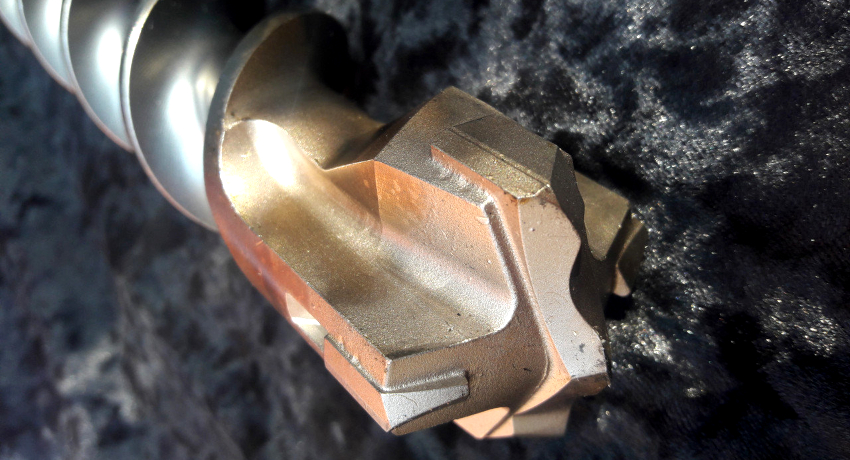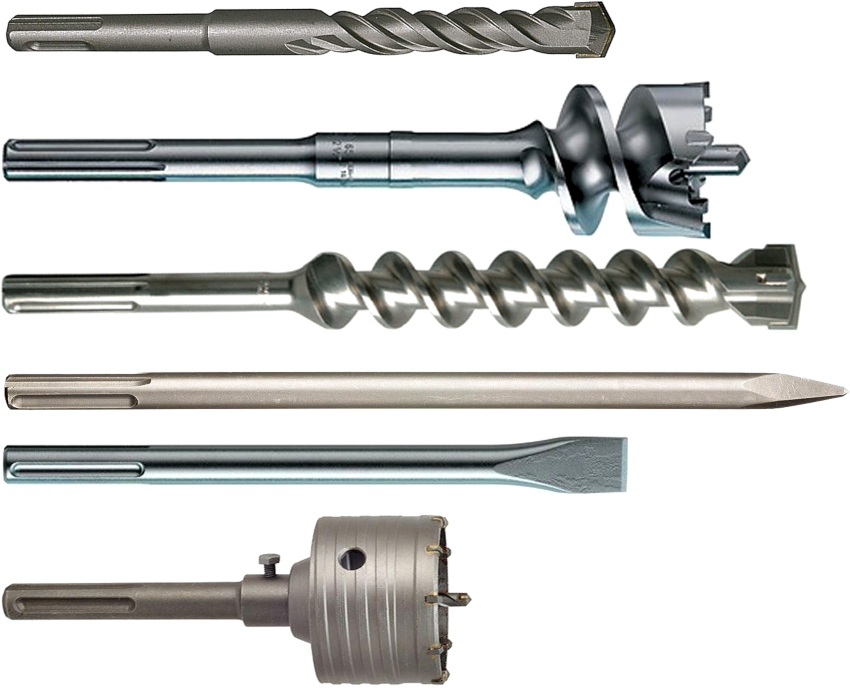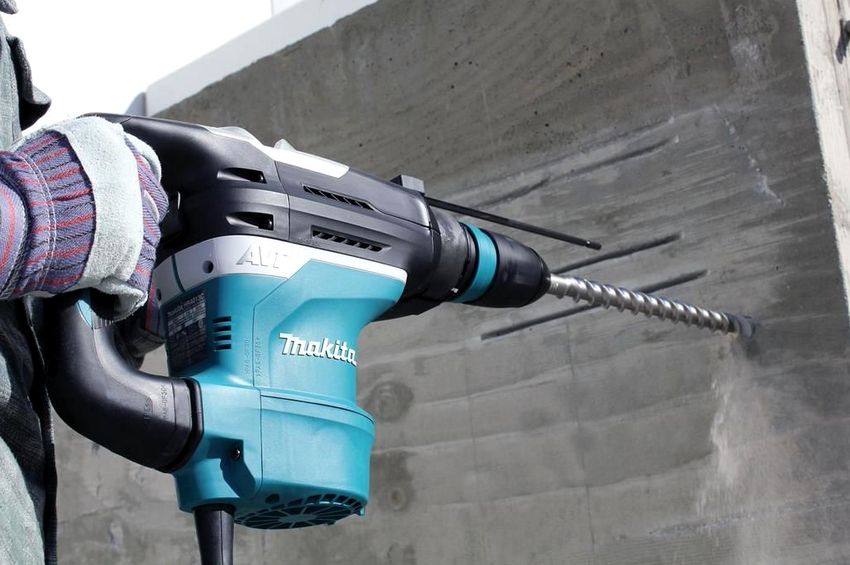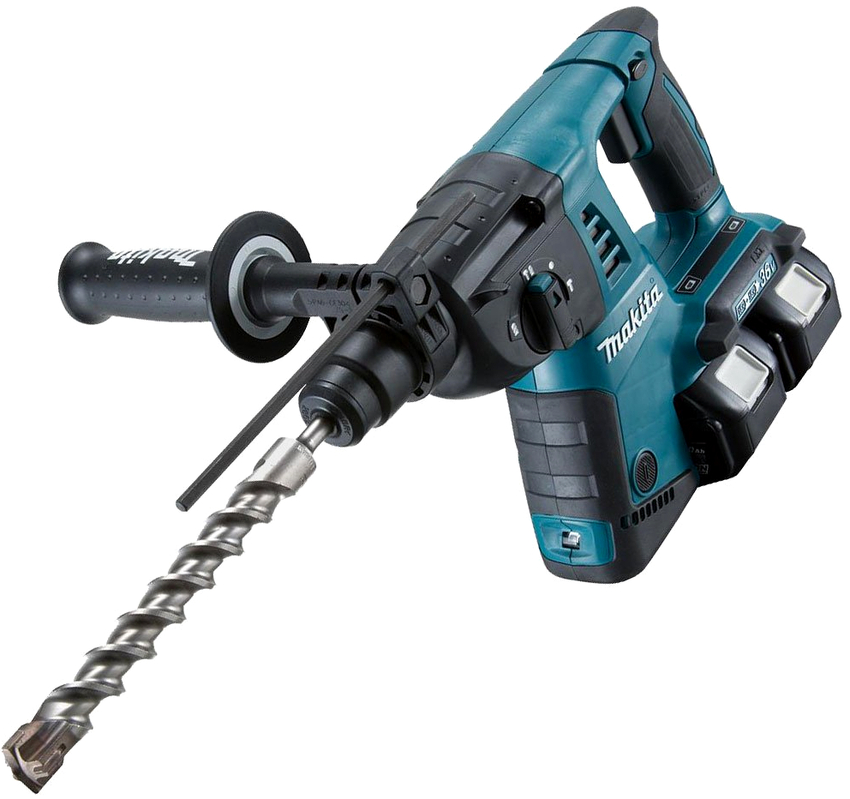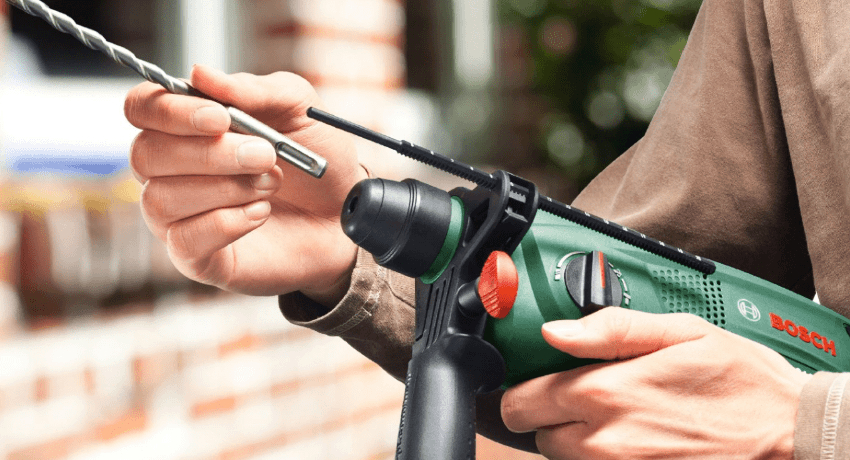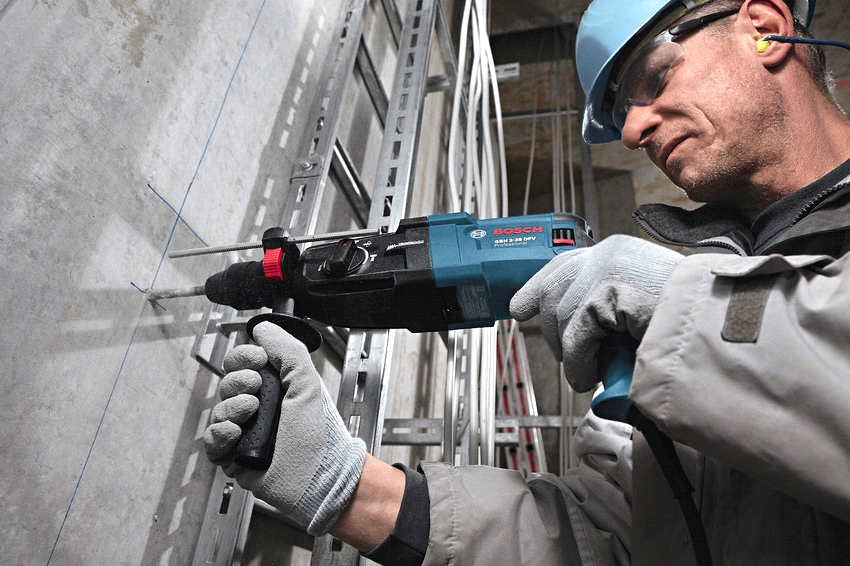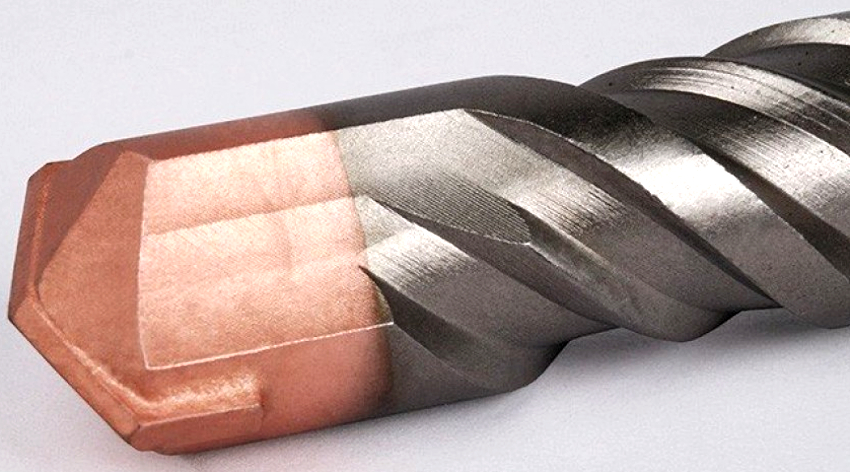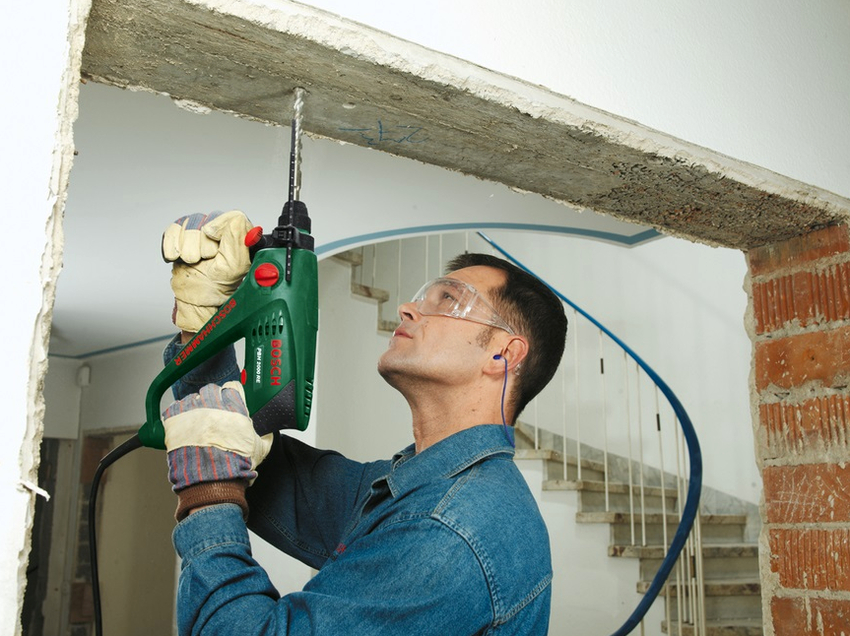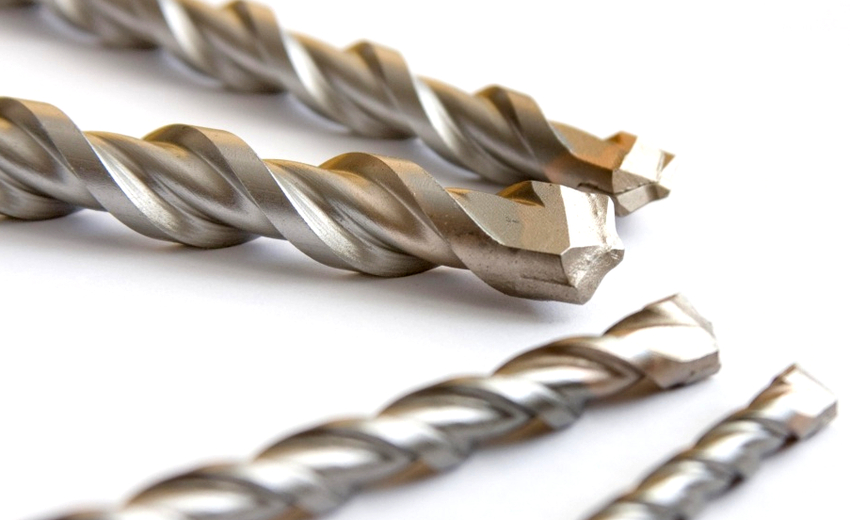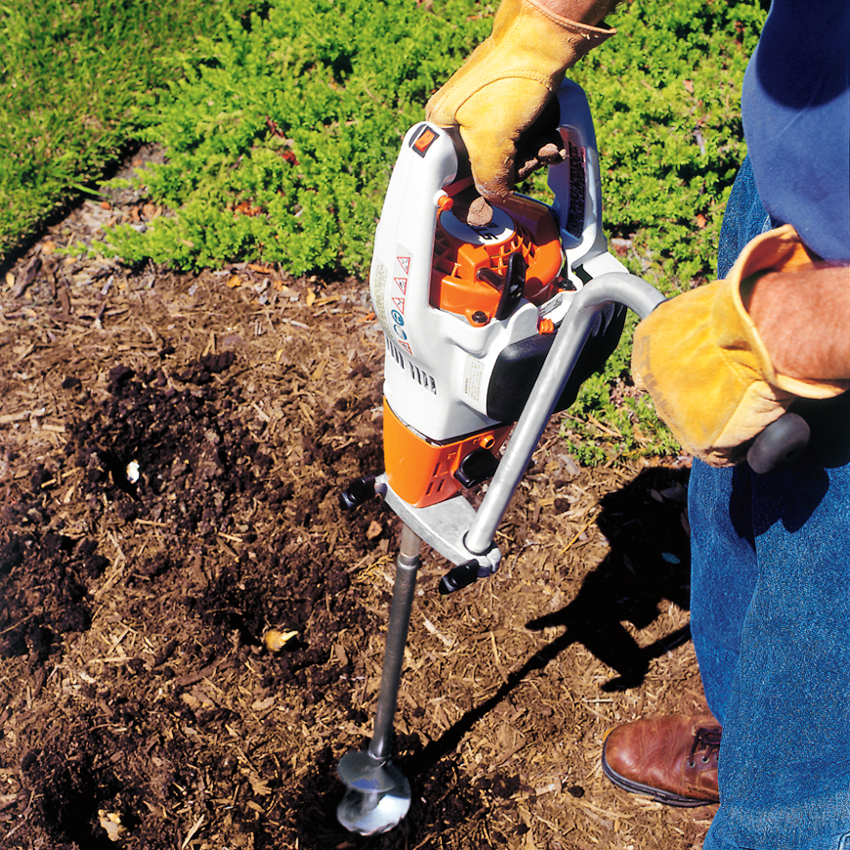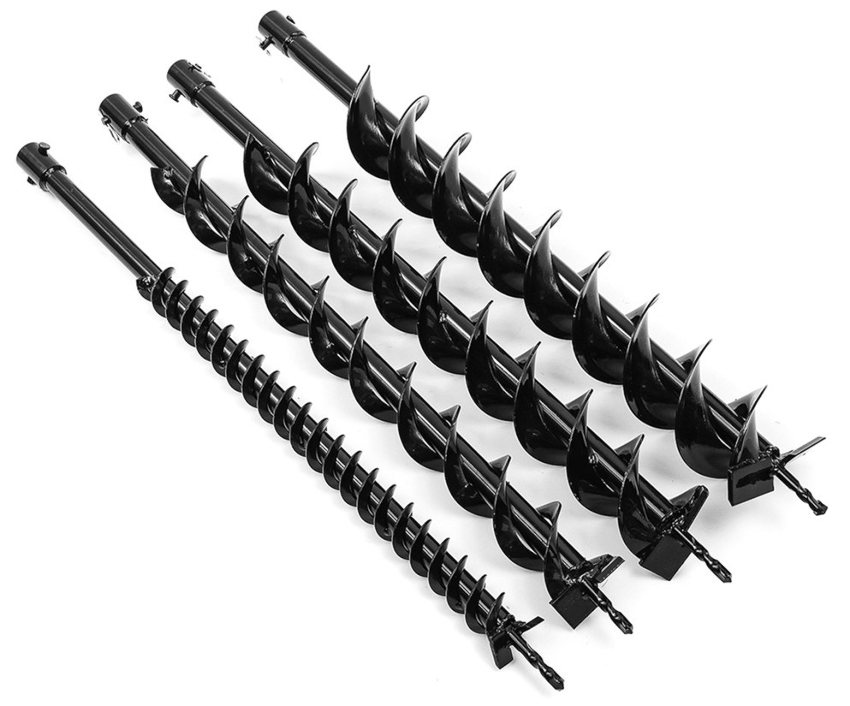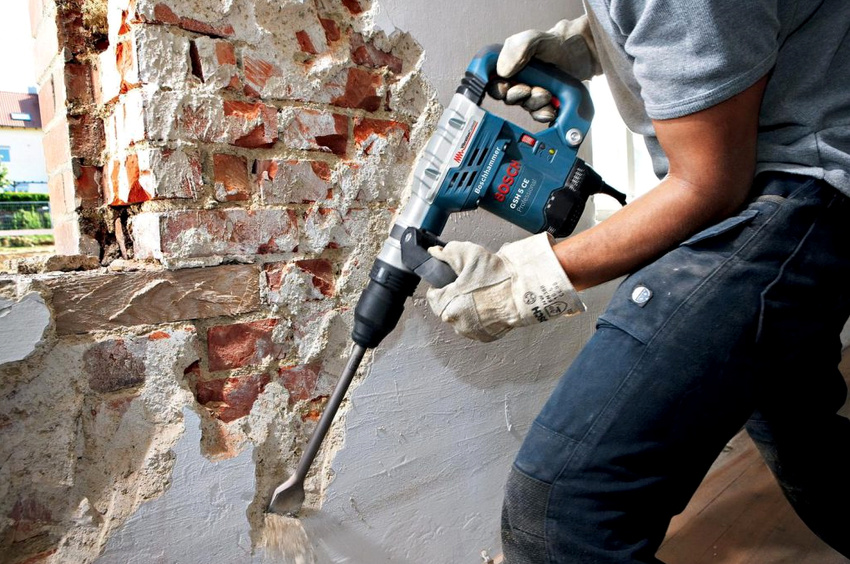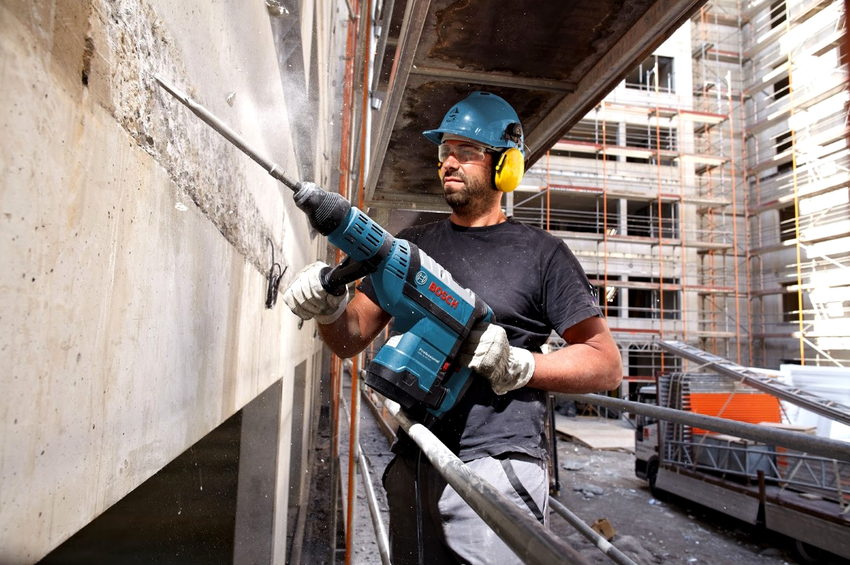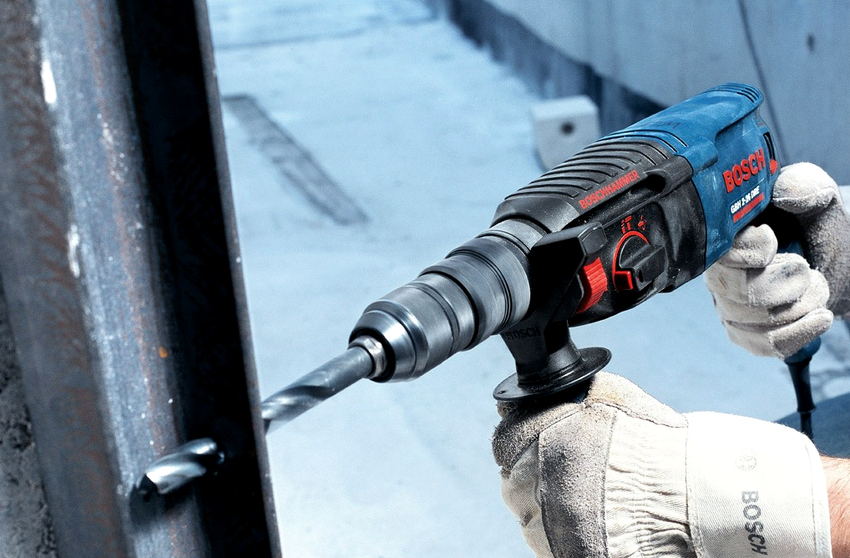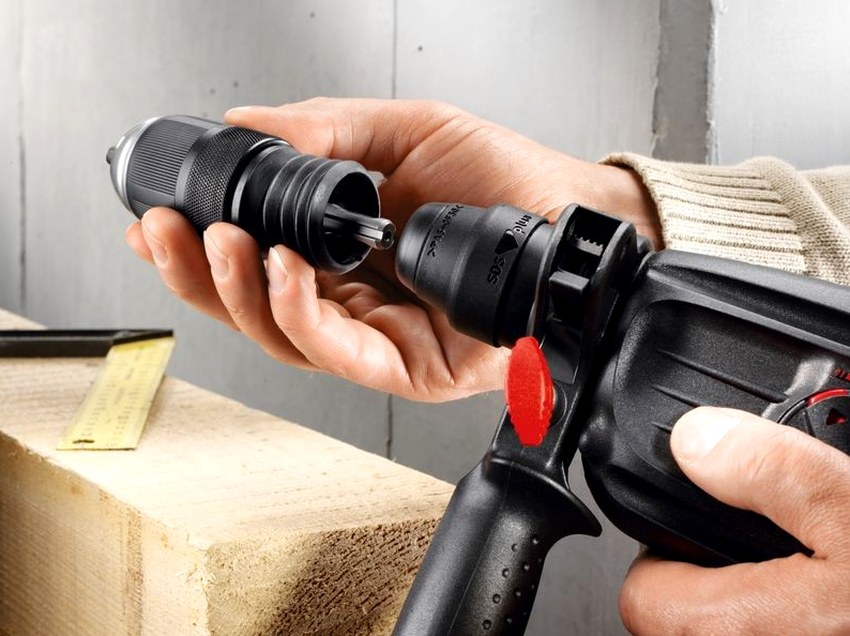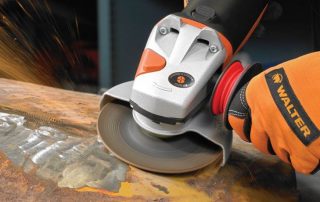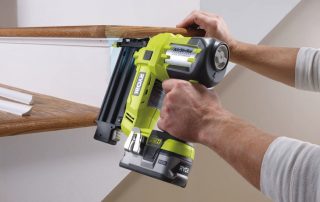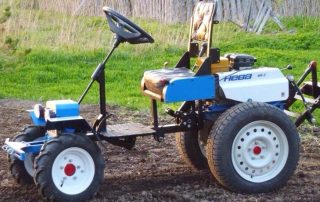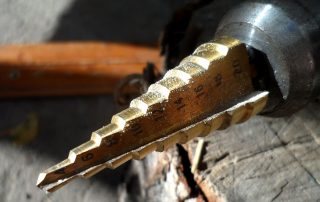During construction or renovation work, it is often necessary to make holes in a brick, stone or concrete wall. For this, a special electromechanical tool is used in the form of a perforator. It is equipped with a replaceable working attachment that performs rotational and shock movements. The hammer drill is available in several versions. Therefore, when choosing a product, one should take into account its design.
Content
- 1 What is a drill for a hammer drill: features of a replaceable tool element
- 2 Drill: This is an impact-cutting tool, not a drill
- 3 Classification of impact-cutting attachments for rock drill
- 4 Drill for a perforator for concrete: element types
- 5 Special Features of Earth Drills
- 6 The main criteria for choosing a drill for a perforator
- 7 How to use a hammer drill with attachments correctly
- 8 Useful tips for using a hammer drill bit
What is a drill for a hammer drill: features of a replaceable tool element
The drill is a working shock-cutting replaceable part of an electromechanical tool. It looks like a drill in appearance. For a hammer drill, the nozzle is made of a more durable material. It is equipped with a tail section with special grooves. It is characterized by a wide range of sizes. A drill for concrete has characteristic features in the form of a spiral structure of the section, a peculiar geometry of the edge for carving.
The drill consists of a landing tail, a spiral rod and a cutting part. By means of the tail end, the element is fixed in the tool holder. The spiral rod is the working part. It is designed to remove residual dust and drilled concrete from holes. The basis of the element is the cutting part.
The drill is made from several materials. Alloy tool steel is used for the surface. The cutting edge is additionally soldered from diamond or pobedit. This manufacturing technology improves the performance of the product and increases its service life.
Helpful advice! To increase the operating life of the consumable element for the rock drill, before starting work, the chuck and the shank must be coated with a special lubricant.
The hammer drill is a consumable tool used for making holes in concrete, brick or stone surfaces. You cannot drill metal or wood with such a nozzle. This is due to the specific design of the cutting part. For this, only metal drills for a hammer drill are used.
Concrete drill bits are available in various sizes. For domestic use, for a small hammer drill, it is enough to purchase a nozzle with a diameter of 6-10 mm. In this case, a dowel of the appropriate size is selected. The maximum product diameter reaches 50 mm. For large objects, use a 20 mm long drill. The length of the product can be 10, 50, 80 and 100 cm. When making drills, a strict ratio between diameter and length must be observed to ensure efficient, reliable and durable operation of the nozzle.
Helpful advice! Information about the diameter and length of the product is displayed in its marking.
Drill: This is an impact-cutting tool, not a drill
The drill and drill are similar in appearance to each other. Both consumables are used to make through holes or recesses in a cylindrical configuration. This nozzle is used for plastic, metal and wood.
For dense, non-shock-absorbing surfaces in the form of concrete, stone or brick, only a drill for a hammer drill is used. As a result, you can unequivocally answer the question of how to drill a concrete wall with an ordinary drill. No, a hammer drill with a drill is used for this.
Impact cutting tools in the form of a drill are much stronger than drills. The drill is also larger in diameter than this type of bit. The maximum value of the drill section is 14 mm, and for the drill this value reaches 55 mm. The design of the shank also differs. The drill has recesses, and the drill has no grooves. The length of the attachments is also different. The drills are available in sizes up to 300 mm, and the drill length reaches 1 m.
The drill can be used as a bit for both impact and non-impact rock drills. The drill is not used for this bit. The drill is equipped with a head with different edges and several cutting inserts. Some bit models have a special geometry that allows the tool to be held in the center of the recess. The drills are characterized by low productivity, and the drill can work for a long time under high shock load conditions.
Classification of impact-cutting attachments for rock drill
The percussion-cutting consumable element of the perforator can be classified depending on the design, which determines the scope of the element.
The auger drill is a self-sharpening element, which is mainly used when drilling holes of considerable depth. It is characterized by high strength, endurance, efficiency, the ability to remove the crumbs formed in the hole, and durability under severe operating conditions.
A drill in the form of a conventional auger drill is used to create cylindrical holes. For work on concrete, a peak is used. Thanks to its special configuration, it is able to create wide openings. Acts like an electric hammer.
A chisel is used to dismantle materials. A special type of shock-cutting element in the form of a crown is intended for the installation of electrical outlets. With the help of such a drill, a deep hole of the correct rounded configuration is created. It can be safely used when making strobes for laying pipes for water supply.
A drill for wood is several times more effective than a similar type of drill. This contributes to a decrease in working efforts, quick separation of chips, preservation of the wood structure under the action of such a cutter. An earth drill is used to create round holes in the ground, which is carried out thanks to the special structure of the cutting rod.The concrete drill makes holes in concrete, brick and stone surfaces.
Drill for a perforator for concrete: element types
The drill is classified according to spiral design, shank type, and cutter shape. Based on the design of the spiral rod, consumables for the perforator are screw, spiral and flat.
The auger drill has a large angle of inclination of the spiral groove, which makes it possible to make deep holes. It is also equipped with a self-sharpening triangular tip. The specific design of the auger part for the rock drill facilitates the efficient removal of dust and concrete particles from the holes.
The spiral drill has small helix angles. It is used to create shallow holes. The latter type of tool is characterized by a large angle of inclination of the helix, which provides a high speed of drilling holes and effective dust removal from them. The shallow drill is designed for shallow holes. This is the most common consumable option that is durable. It significantly improves the performance of the rock drill while increasing the load on it.
Important! For a low power rock drill, it is not recommended to use a shallow drill.
By the type of sharpening of the cutting edge, concrete drills are classic and centering. In the first variant, the carbide insert is represented by a four-sided design with front and rear edges. Solders for such sharpening are equipped with one or two cutting edges.
The centering nozzle type is a modernized version of the classic design. The main advantage of such an element is the absence of the effect of displacement of the drill relative to its initial position.
Rotary hammer drill: element classification by shank type
Concrete packing can be classified based on shank version. The most popular type is the SDS Plus rotary hammer drill, which is often used for household and semi-professional tools. It is equipped with a 10 mm diameter shank, which is a cylindrical slotted base. These indentations are required to securely connect the consumable to the tool.
The nozzle contains 4 slots. Two of them are solid or closed, and the other two are open. The tail length is 40 mm. The diameter of the working edge is between 4-26 mm.
Another type of SDS Max concrete drill has a tail diameter of 18 mm. Its length is 90 mm. By the design of the grooves, such a drill is similar to the previous version. The main difference is the difference in the diameters of the working part. For this type, this value starts from 26 mm. This version of the replaceable bit is used for semi-professional tools and jackhammers.
An infrequently used option is the SDS Top hammer drill bit. In terms of design, it is something in between the two previous types of products. Its cylindrical part has a diameter of 14 mm. The shank length is 70 mm. The diameter of the working part of the nozzle is in the range of 16-26 mm.
The SDS Quick nozzle is most similar to a drill in its structure. The tail rod has a hexagonal design. Instead of grooves, it is equipped with veneers or projections, thanks to which it is fixed in the punch chuck. Such a drill 6 mm (diameter) can be used not only for rotary hammers, but also for drills, screwdrivers.
Important! The SDS Quick drill is exclusively suitable for Bosch power tools - for the Uneo and Uneo Maxx models.
The new shank design features the Spline concrete drill. This slotted design was developed by a Chinese company that specializes in the manufacture of rock drills. The new generation nozzle is gradually replacing other analogues, proving its effectiveness and reliability.
Concrete drills: types of soldering
On the cutting part of the drill there is a special soldering of carbide materials, due to which the effective operation of the nozzle is ensured. In case of wear, such a product is unsuitable for further use. Based on the material that is used for brazing, drill bits for a concrete hammer drill can be divided into subspecies.
Victory tips are made from an alloy of two high strength materials in the form of cobalt and tungsten carbide. The first element forms the basis of the product, the second is used as a hardener. Pobeditovy alloy is also widely used for the manufacture of crowns and drill bits for concrete drills. The hardness of the material is 80-90 HRA according to the Rockwell scale.
Diamond drills are characterized by high strength and durability, which is accompanied by a rather high cost of products. A diamond is applied to the cutting edge, and not in the form of a solid crystal, but by means of spraying, which is quite enough to increase the strength characteristics of the nozzle without significantly increasing its cost. It is advisable to use such nozzles for a hammer drill (drill) for drilling reinforced concrete structures, granite and marble. There are also crown modifications of diamond-coated concrete nozzles.
The drill can be equipped with a victorious insert, which is formed by immersing the element in a carbide material. This contributes to increased wear resistance, strength and durability of the product, which can make up to 200 holes. You can distinguish such a nozzle by its appearance. It is characterized by a light colored tip.
Related article:
Concrete crown: an effective solution to repair issues
The principle of operation, the main types of nozzles. Standard crown sizes, application features. Tool resource.
A budget option for a drill, which is not characterized by durability, is a hardened product. For such an element, the tip has a dark color, which indicates additional processing. No durable materials are used to make these attachments. They are distinguished by their low price, wide distribution, since they are carried out by clandestine manufacturers.
Special Features of Earth Drills
The nozzle, with the help of which wells or holes are made in the ground, are called yamobur. It is widely used in various spheres of economic activity, it makes holes with a circular cross section. A drill for land on a perforator is necessary when arranging a site, installing poles, creating a pile foundation, erecting gazebos or arches, installing a fence, when laying engineering communications, building wells or wells. The attachment is made of thick-walled pipe, metal sheet, metal drill, steel disc.
Important! Yamobur can be used with a hammer drill with a power of at least 850 W.
The hammer drill (for the ground) is presented in two versions, depending on the design of the working part. It can have a spiral shape or be made in the form of a disc hemispherical knife. Experienced craftsmen prefer to use the second option.
There are several types of products: screw, garden and TISE pile drills. The garden nozzle is the simplest mechanical device.It is a double-sided product with a tubular bar, a handle and a cutter, which has two blades on the opposite side. Such an earth rock drill is used to create shallow holes or boreholes.
The auger auger is equipped, in addition to the cutting blades, with a screw auger. The split design and multiple cutters ensure high working speeds. Increasing the rotational speed of the bit helps to deepen the tool to a certain depth.
The TISE earth drill is equipped with a supporting base and supplemented with some elements. The soil receiver with auger plates and special cutters ensures quick extraction of soil from the pit. Thanks to the cylindrical storage, a perfectly straight hole can be made in a vertical position. The expandable boom section assists in adjusting the desired depth. If obstacles are found in the ground, the guide pin comes to the rescue.
The main criteria for choosing a drill for a perforator
When choosing a nozzle for domestic or professional use, different approaches are required. However, in any case, the drill must be made of durable carbide material, which contributes to its reliable, efficient and durable operation. You should purchase a set of drills for a rock drill from a trusted manufacturer that produces quality products. Instances at a low cost can be used for one-time work. In addition, such products can damage the hammer drill.
Helpful advice! The companies Bosch, Sturm and Makita have proven themselves on the best side.
For domestic use, it is enough to purchase nozzles of the middle price segment, and for professional purposes it is better to choose more expensive pieces.
Based on the purpose of the product, the type of shank is selected. The most popular option is the SDS Plus drill, which is used for small and medium capacities. Its diameter is 10-18 mm, the length of the fixed part is 4 cm. To create wide holes, the SDS Max nozzle should be selected, the diameter of which varies from 18 to 32 mm. The most popular is the drill for the 20 mm perforator.
If you need to make a hole larger than 32 mm, you should purchase core drills for a hammer drill. When choosing a drill, you must also pay attention to the shape of the cutting part, which can have two, three or four edges. The latter option is the most effective, but has an increased cost.
Important! When choosing a drill by the type of shank, it is necessary to clarify in the instructions for the rock drill which bit is suitable for it.
Additionally, for drilling, you can purchase an extension that increases the length of the hole without changing its diameter. This is very important when doing earthwork and using crowns. The attachment can be supplemented with a set of rods of different lengths, which expands the functionality of the product, increasing its productivity.
How to use a hammer drill with attachments correctly
Before using the hammer drill, make sure there is no damage. If necessary, the instrument must be pre-cleaned. Before inserting the drill into the hammer drill, it must be lubricated. Otherwise, the rubbing part of the working attachment may be damaged when the power tool is heated.
Then the drill with some effort is fixed in the chuck for the hammer drill with the shank. If you hear a click, the tip is installed correctly. However, for control, you should try to pull the drill back, which should not be realized. If there is play, the cartridge must be replaced.
Important! For efficient and long lasting power tool operation, apply a rock drill lubricant before each use of the consumable.
During the drilling process, every 10-15 seconds the drill should be removed from the hole. To replace the drill or at the end of the work, you must press the special ring of the chuck along the axis in the direction of the power tool, after which you can remove the consumable.
It may happen that the drill cannot be removed from the chuck. This indicates the deformation of the shank, which occurred during the execution of the work. A similar situation may arise when using a product made of poor quality material. This phenomenon can also be observed as a result of excessive stress on the tool during the drilling operation.
To extract the drill, you can use a vice, where it is clamped. The hammer drill is pulled out in an unwinding motion (from side to side). In this case, the cartridge must be in the open position. A stuck drill can be wrung out with a gas wrench, which will act as a lever.
Helpful advice! In case of jamming of the replaceable material, the perforator is switched to impact mode, and the nozzle is removed by pulling towards itself.
During the operation of the hammer drill, the drill may fly out of the chuck. This is possible as a result of prolonged manipulation of the tool at an angle, a defect in the consumable part or wear of the locking mechanism.
Useful tips for using a hammer drill bit
The drill must be used strictly as intended. Conscientious manufacturers indicate information on the scope of use on the packaging, since nozzles can be equipped with different inserts, profile and tips.
The type of drill is selected based on the nature of the treated surface. The harder the base, the more rigid the nozzle tip material must be. For a hammer drill, the best option is a pobeditovy drill or a product made of VK 8 alloy with a high tungsten content.
The size of a concrete drill for a perforator is selected not only based on the required hole diameter, but also taking into account the power of the device. The hammer drill bit size may simply not be the right size for the tool holder.
Helpful advice! If it becomes necessary to use a drill that is not suitable for the hammer drill, you can use a special adapter that is used exclusively for professional power tools.
When creating holes, you should be guided by the recommendations contained in the instructions for the punch. The optimum speed will depend on the surface material and the type of drill. During the execution of work, the drilling axis should not change. This can lead to deformation of the nozzle and its failure.
For drilling a concrete surface with reinforcement, a diamond-coated nozzle should be selected. For small holes, a 6 mm rotary hammer drill with a flat spiral is used.
Having an idea of the features of the drill, its differences from the drill, understanding the types of nozzles, it is easy to make the right choice when buying a consumable for a perforator that will cope with the task at hand. This is the key to efficient, reliable, safe and durable operation of the electromechanical tool.
